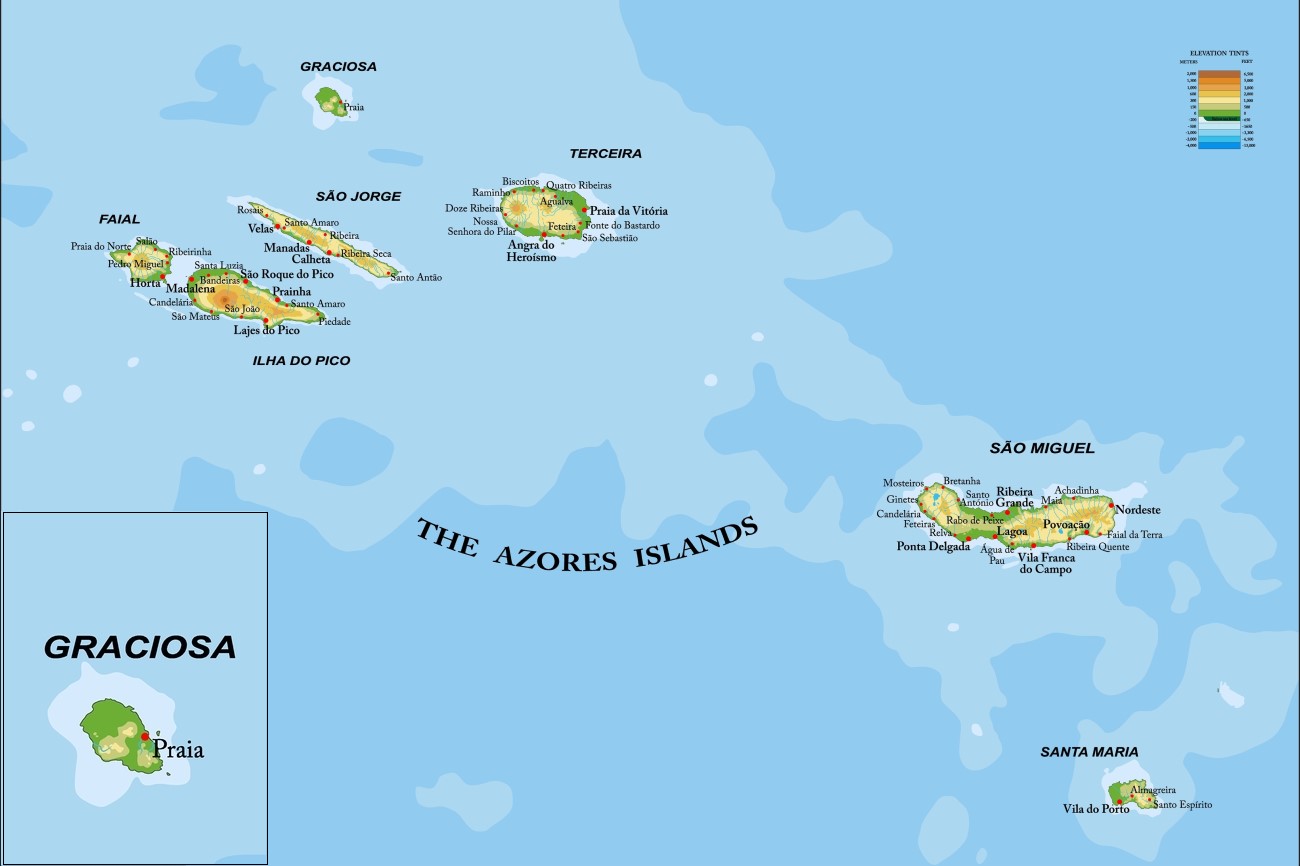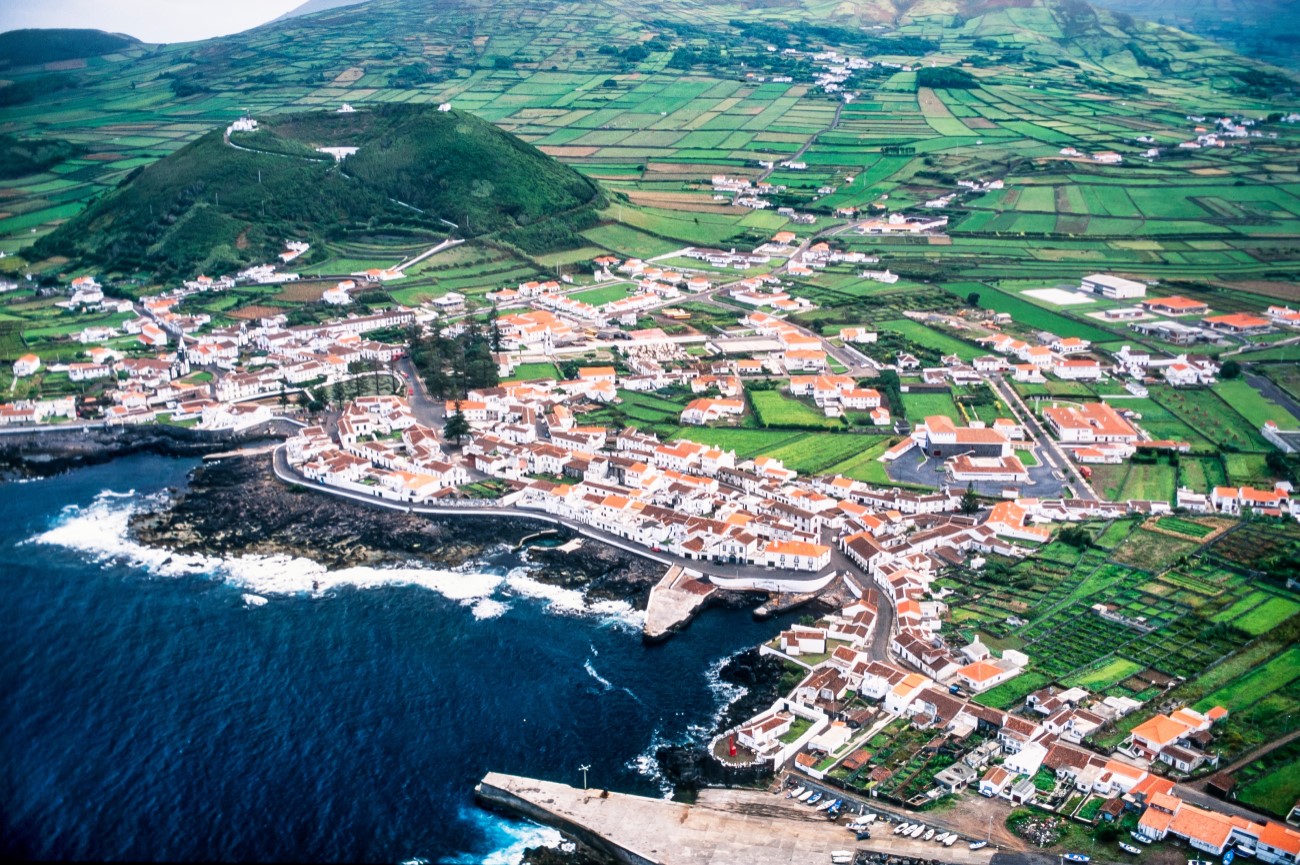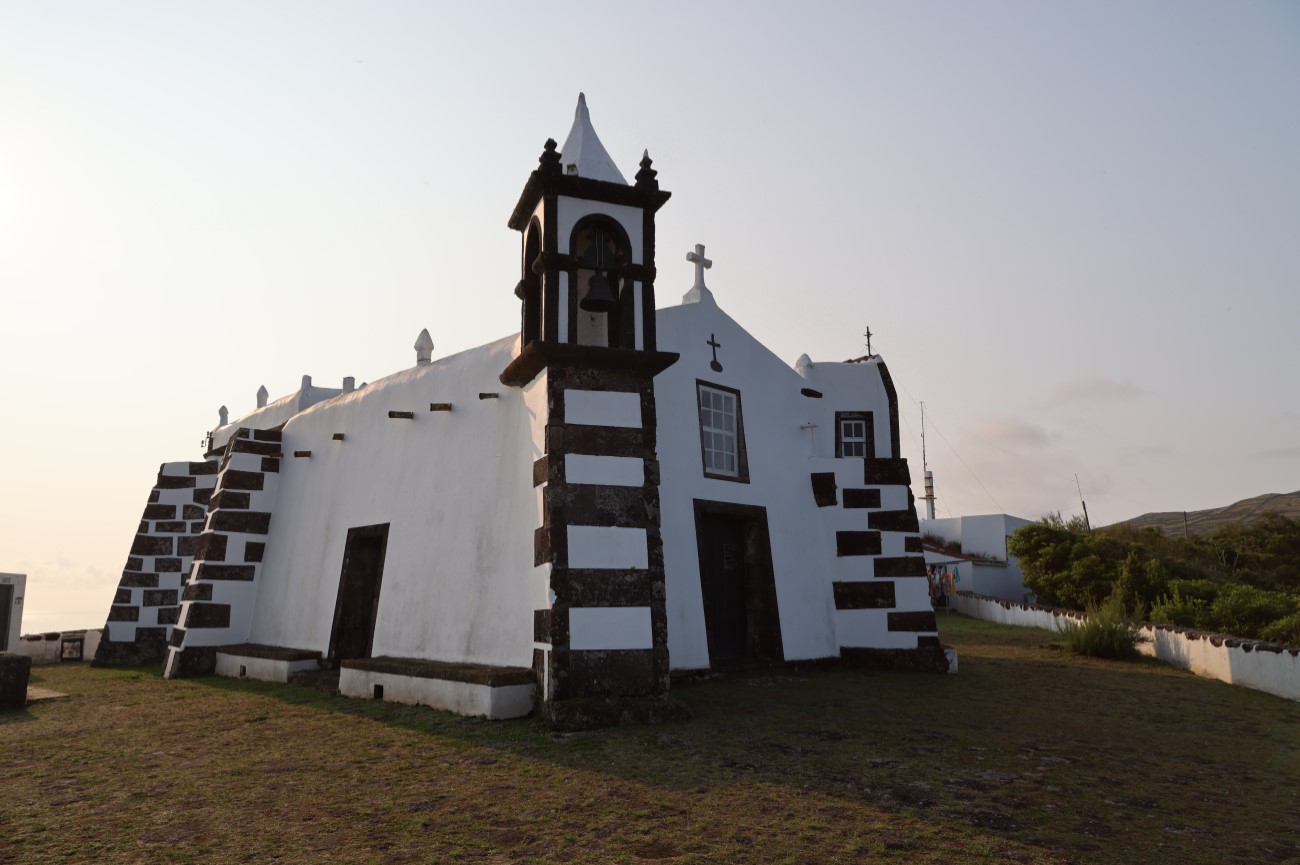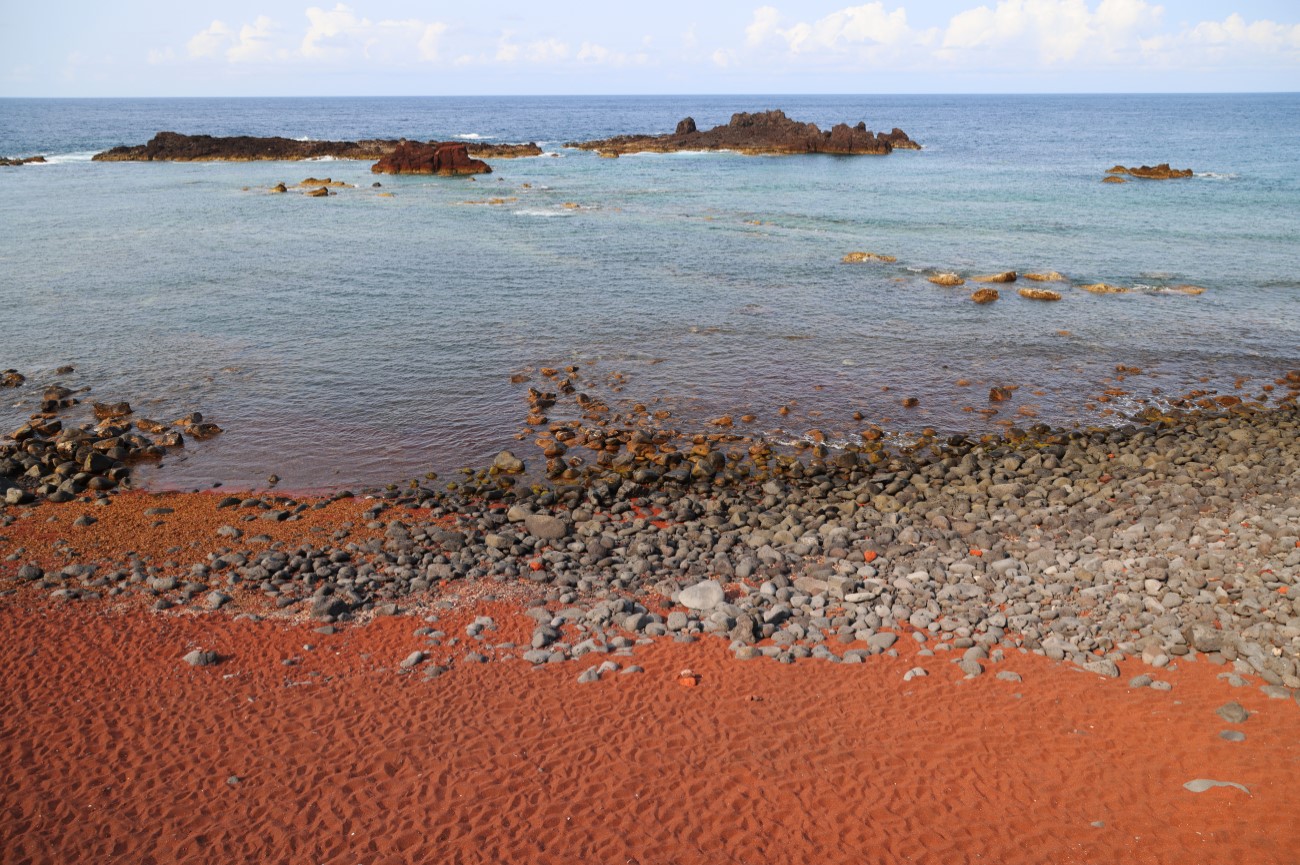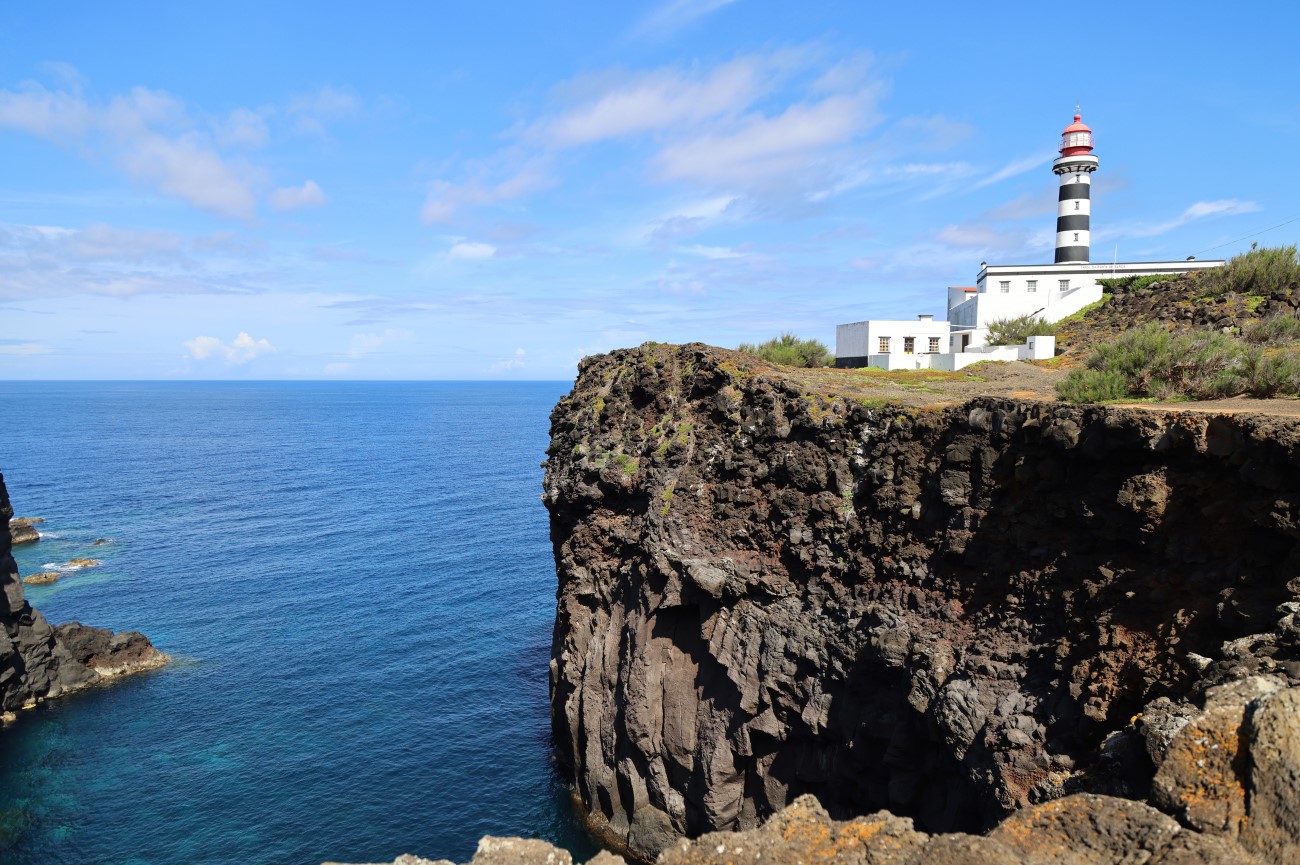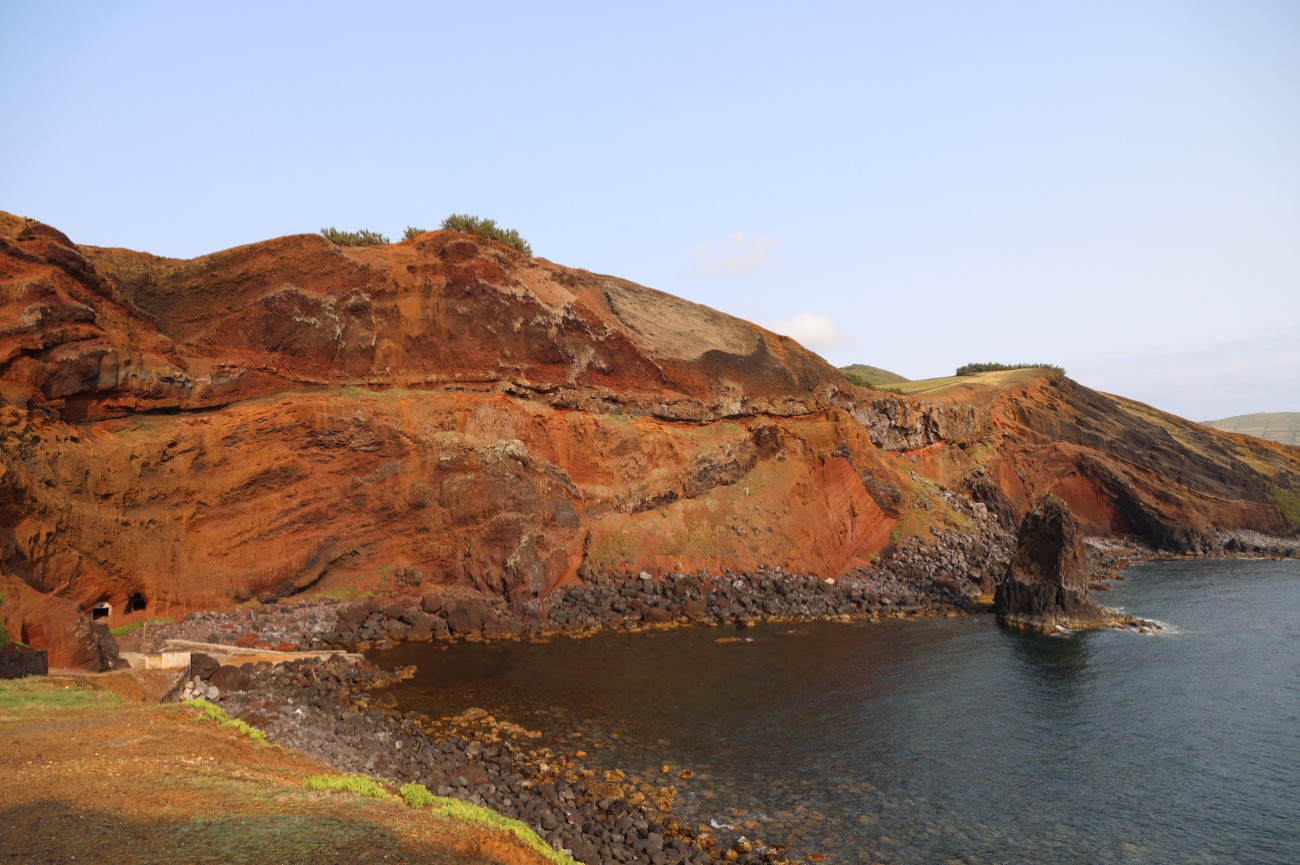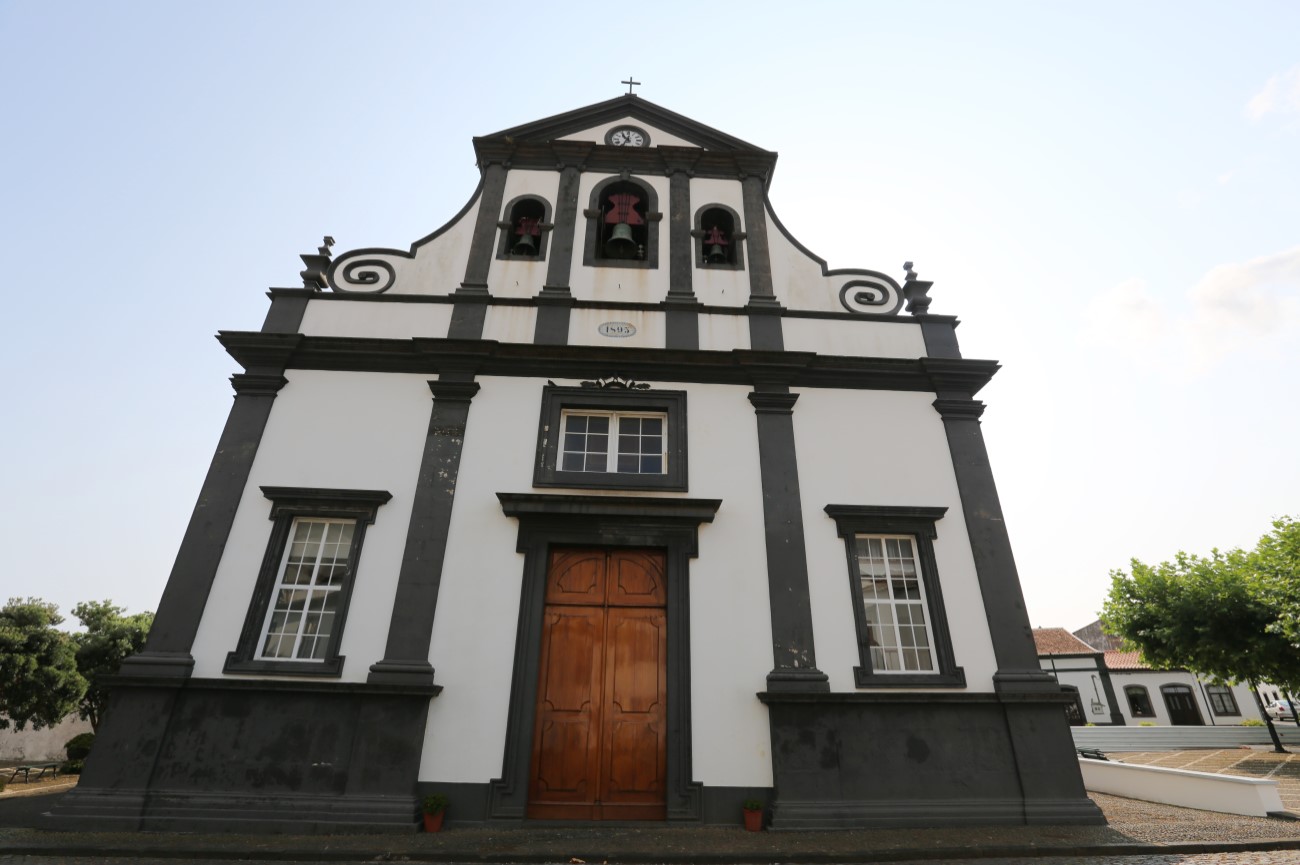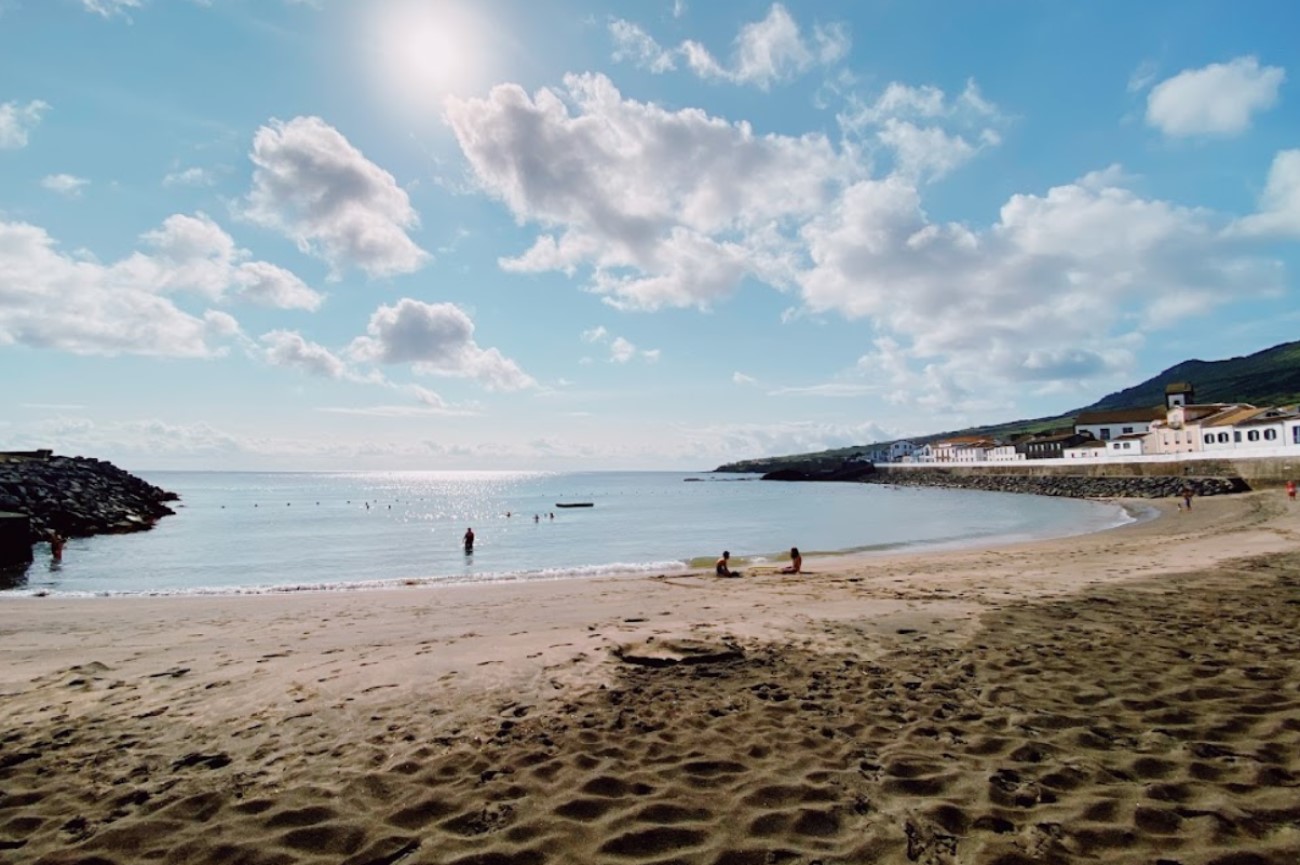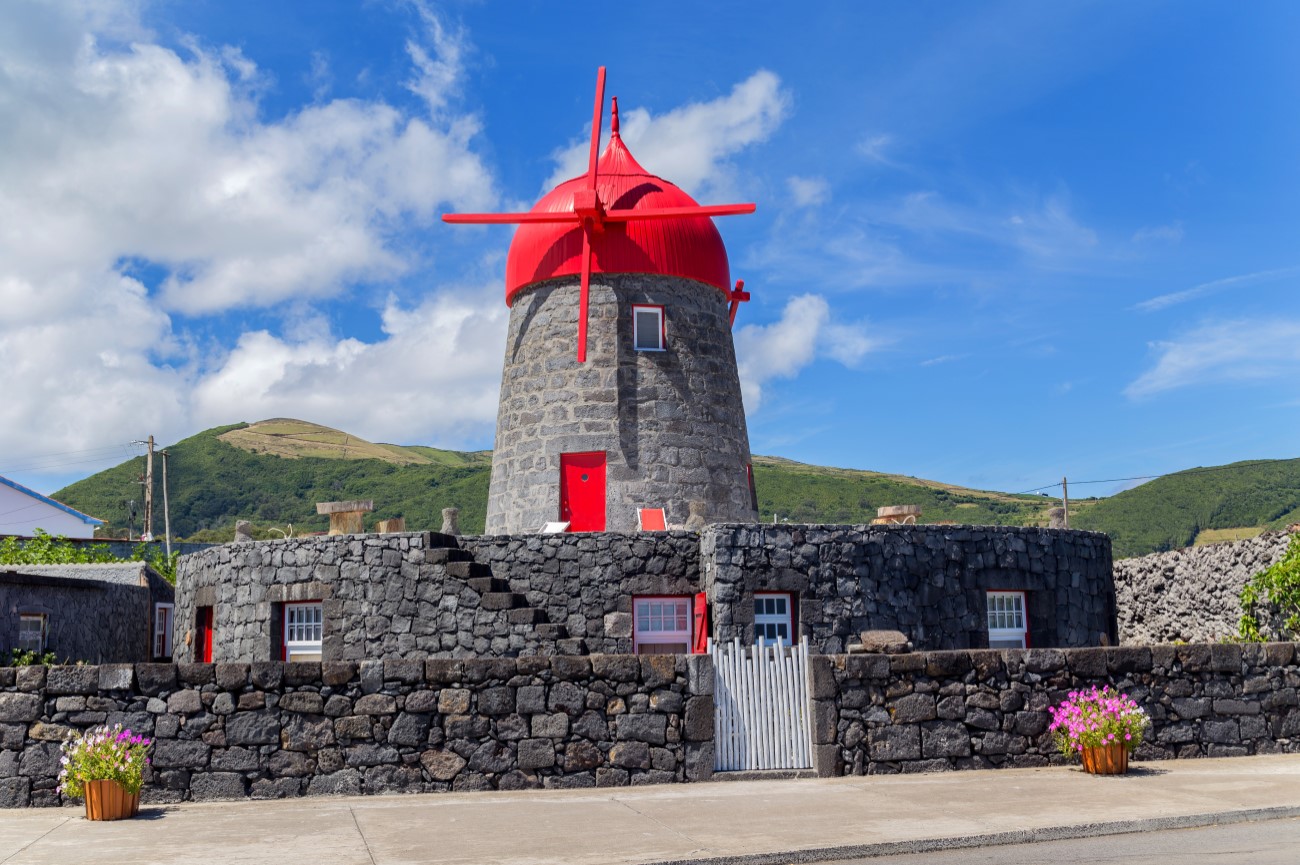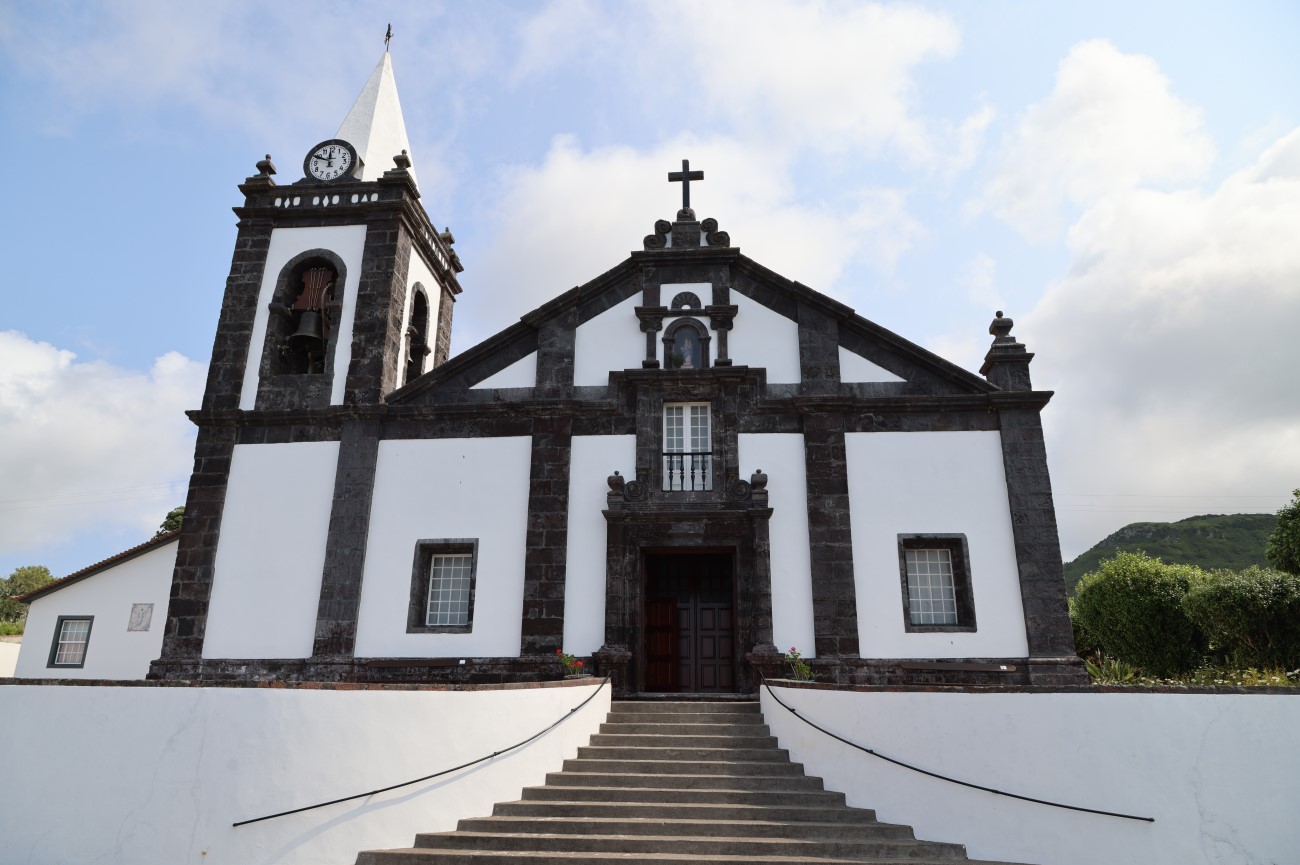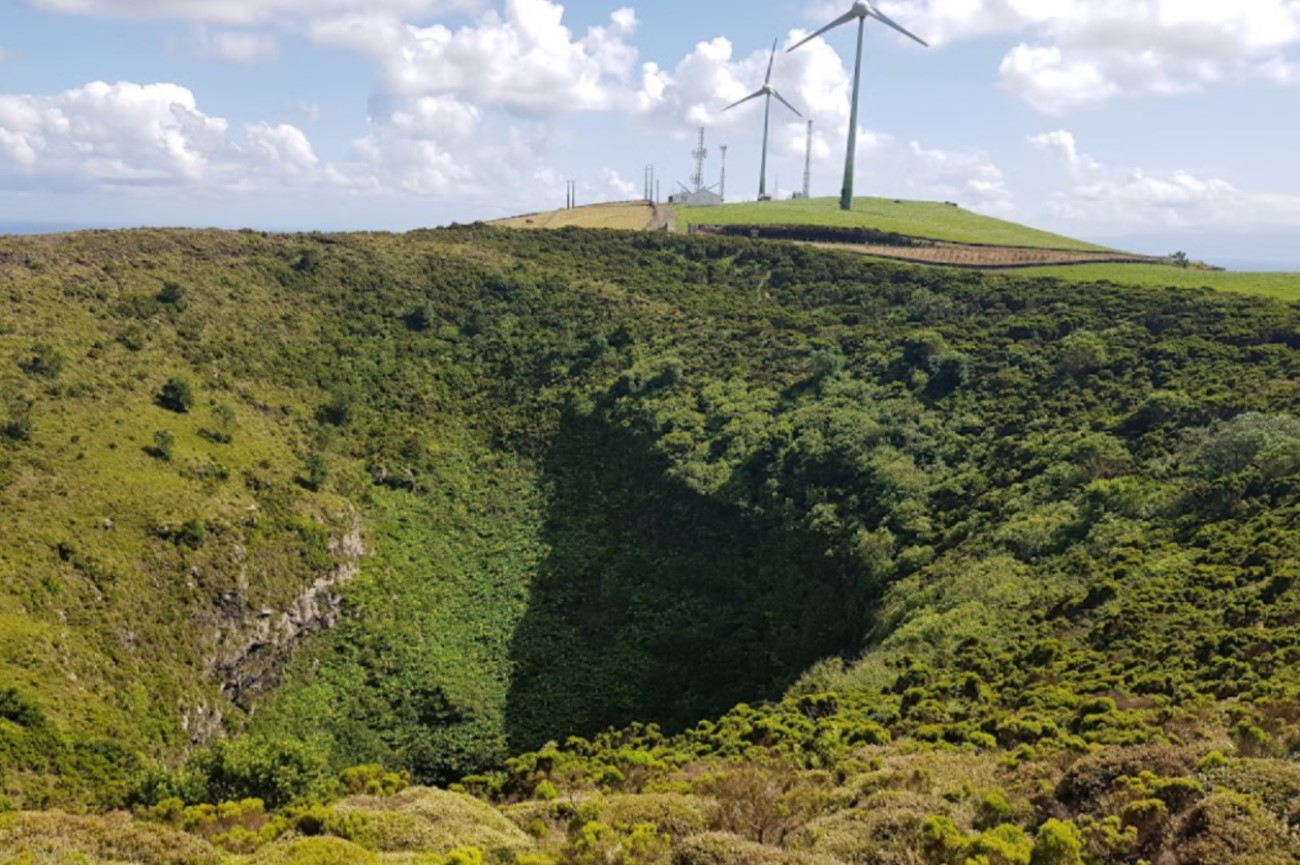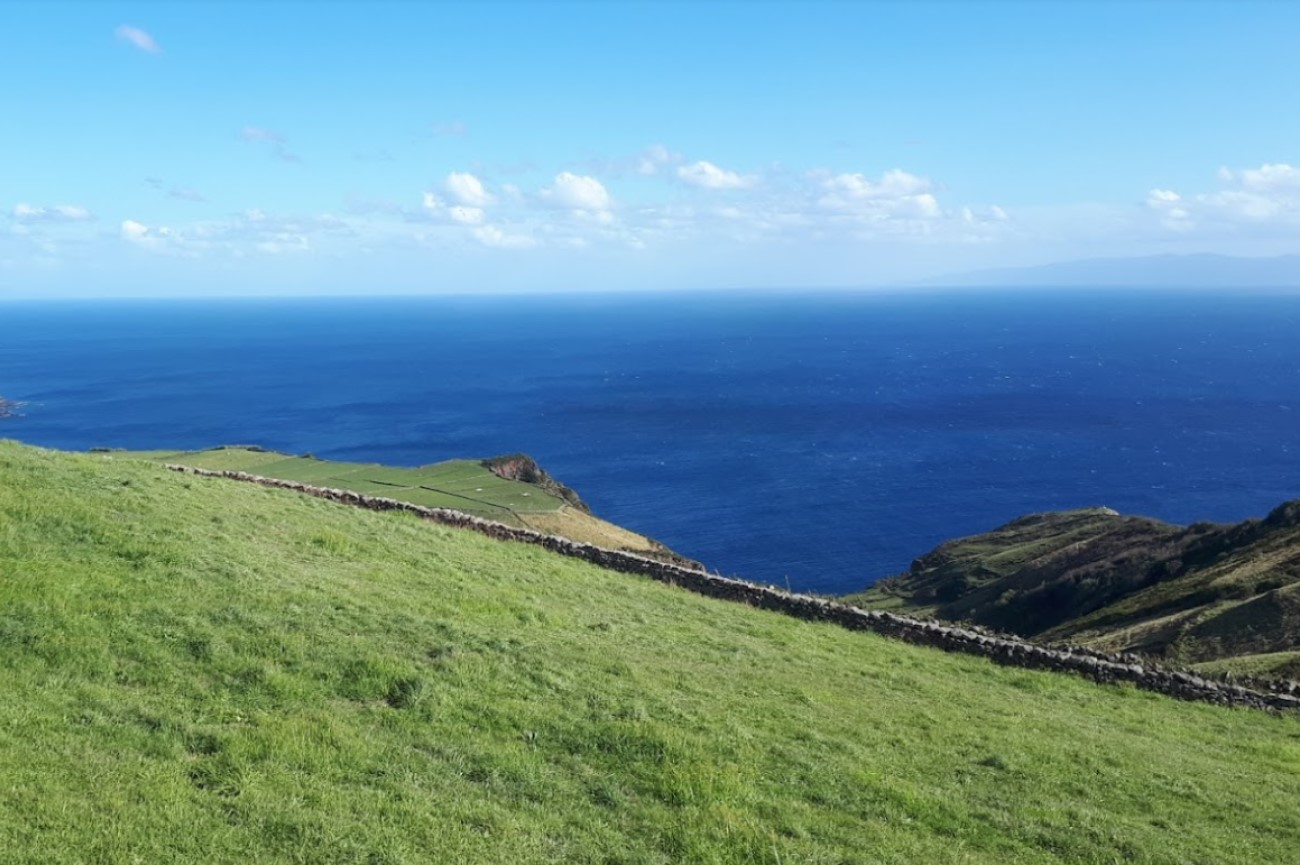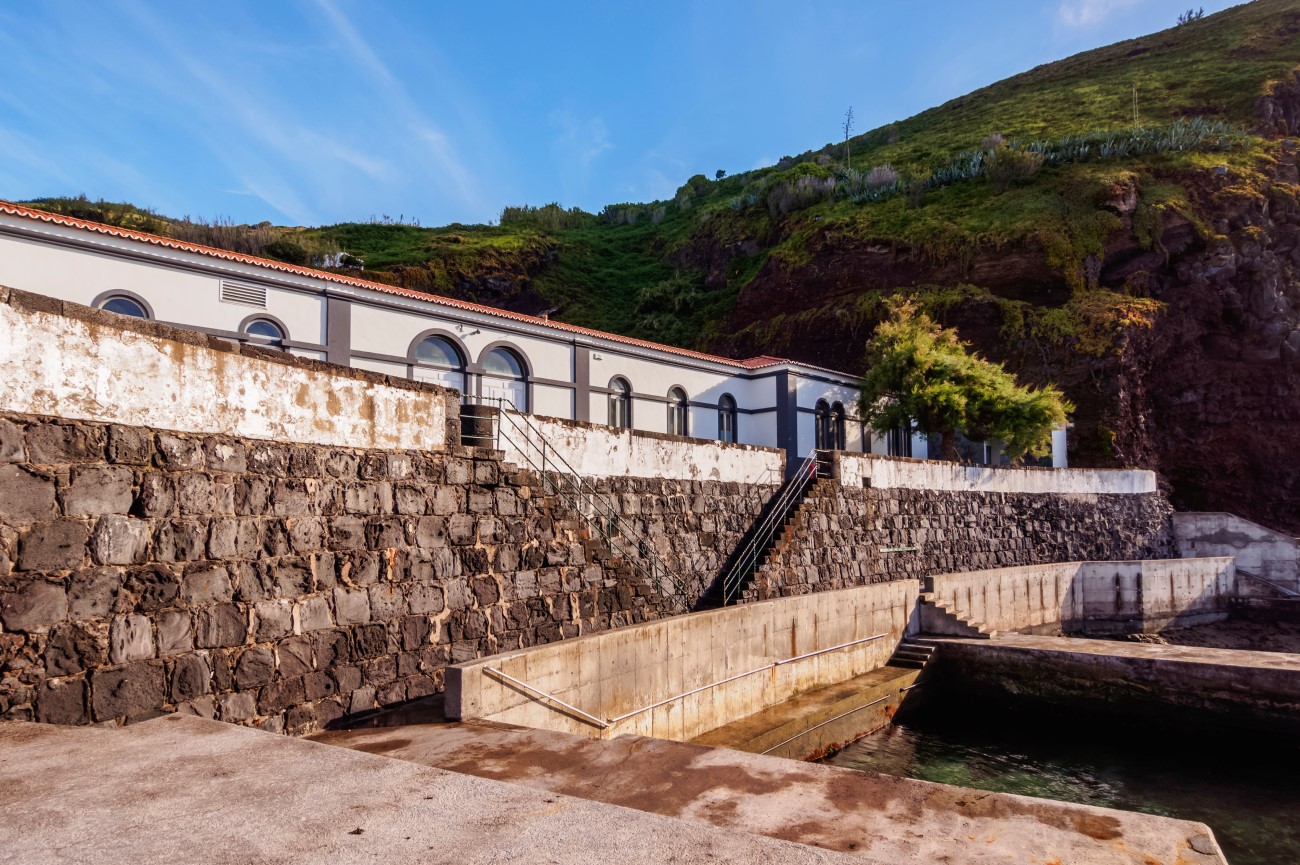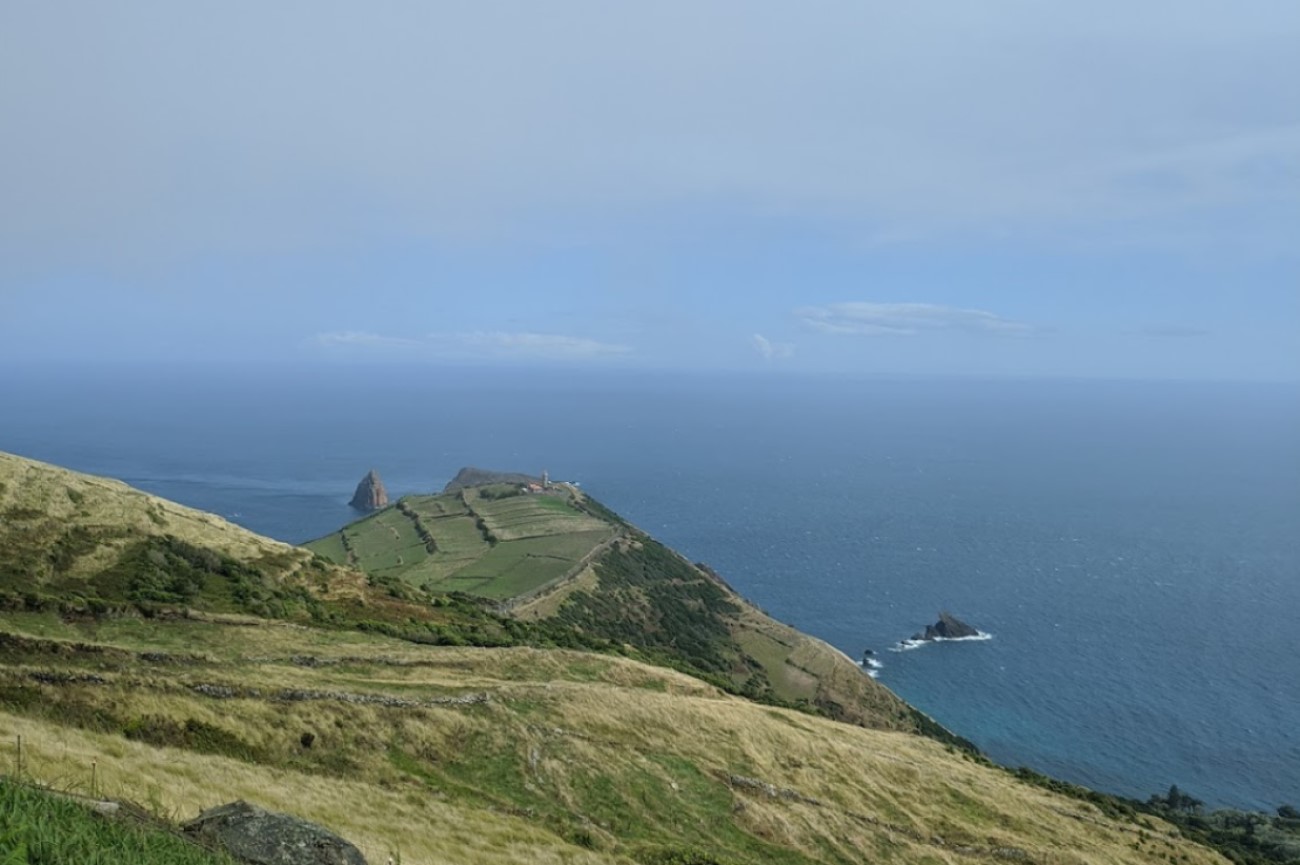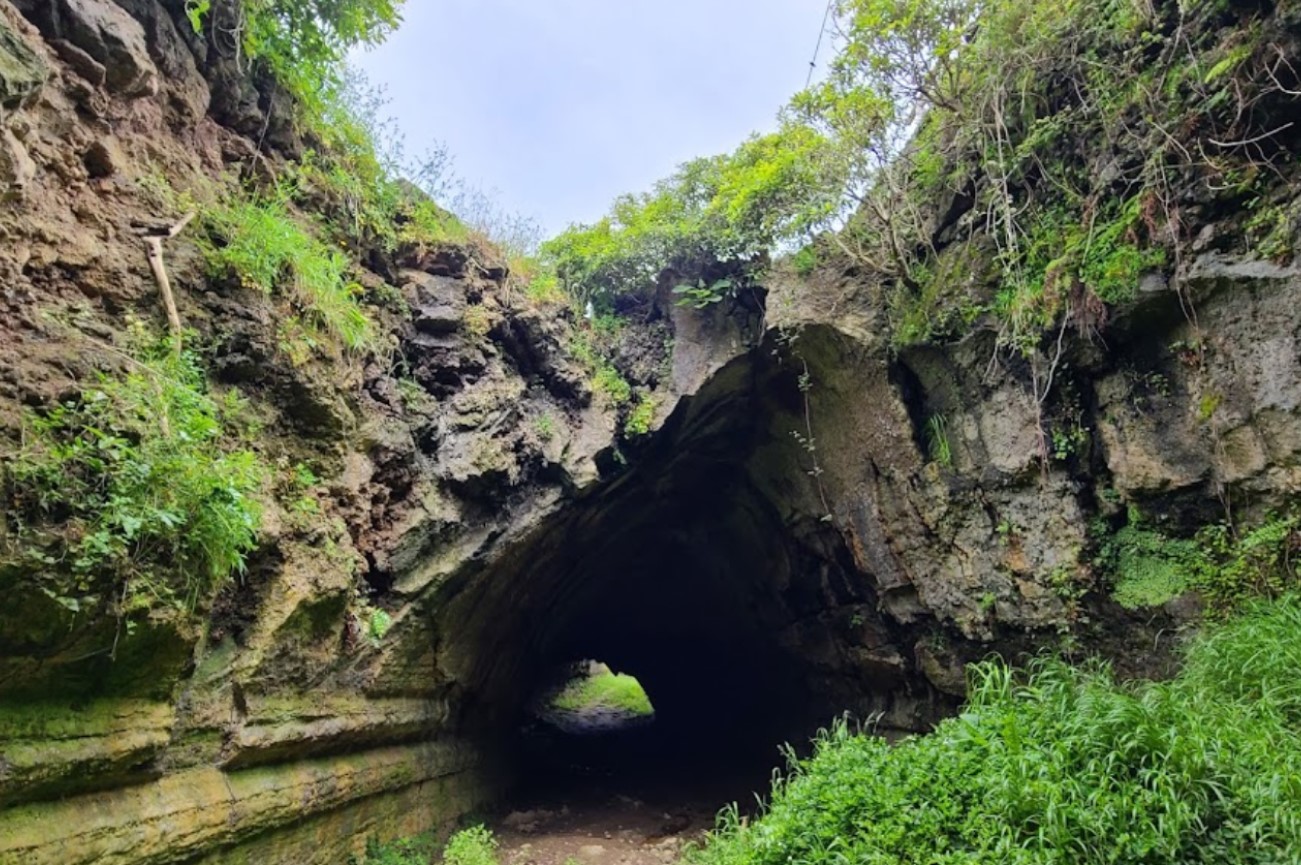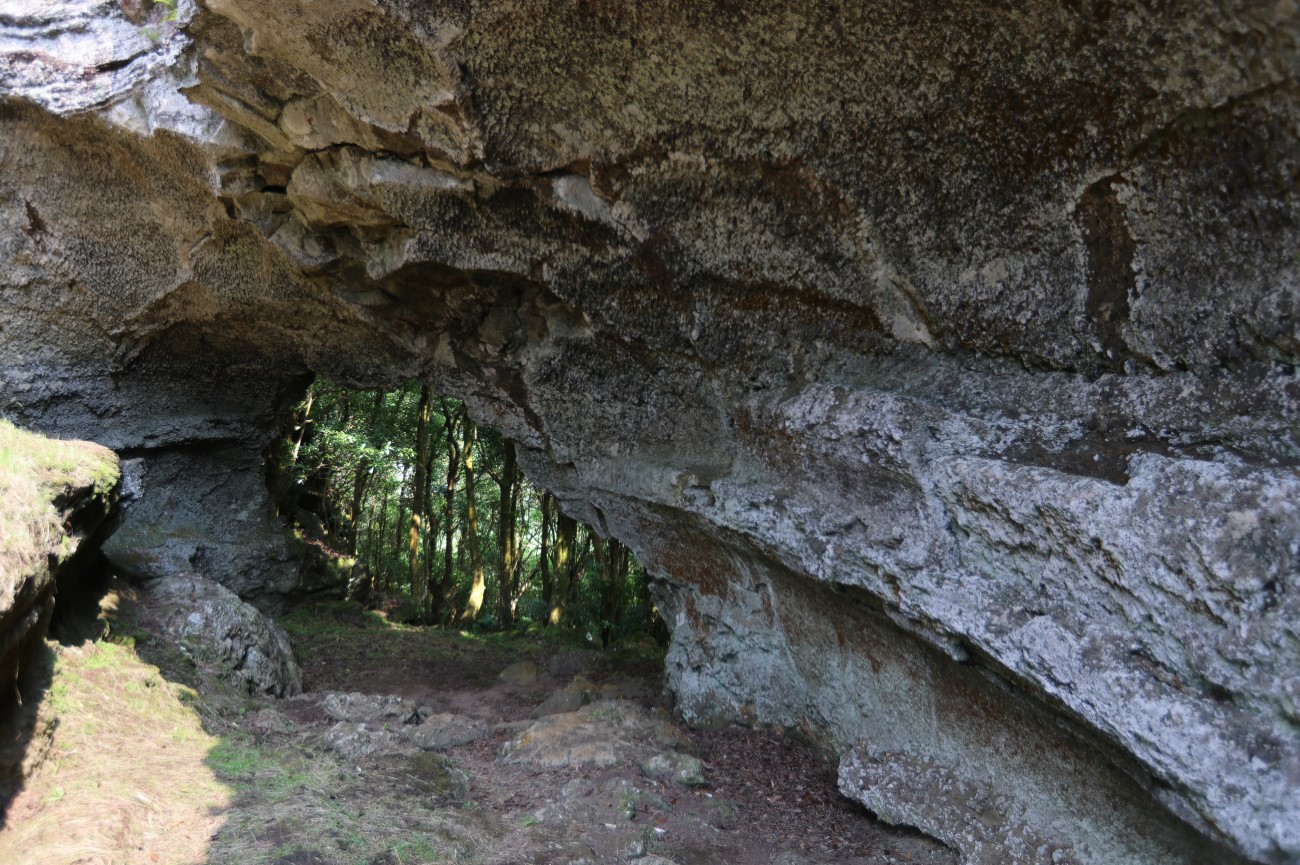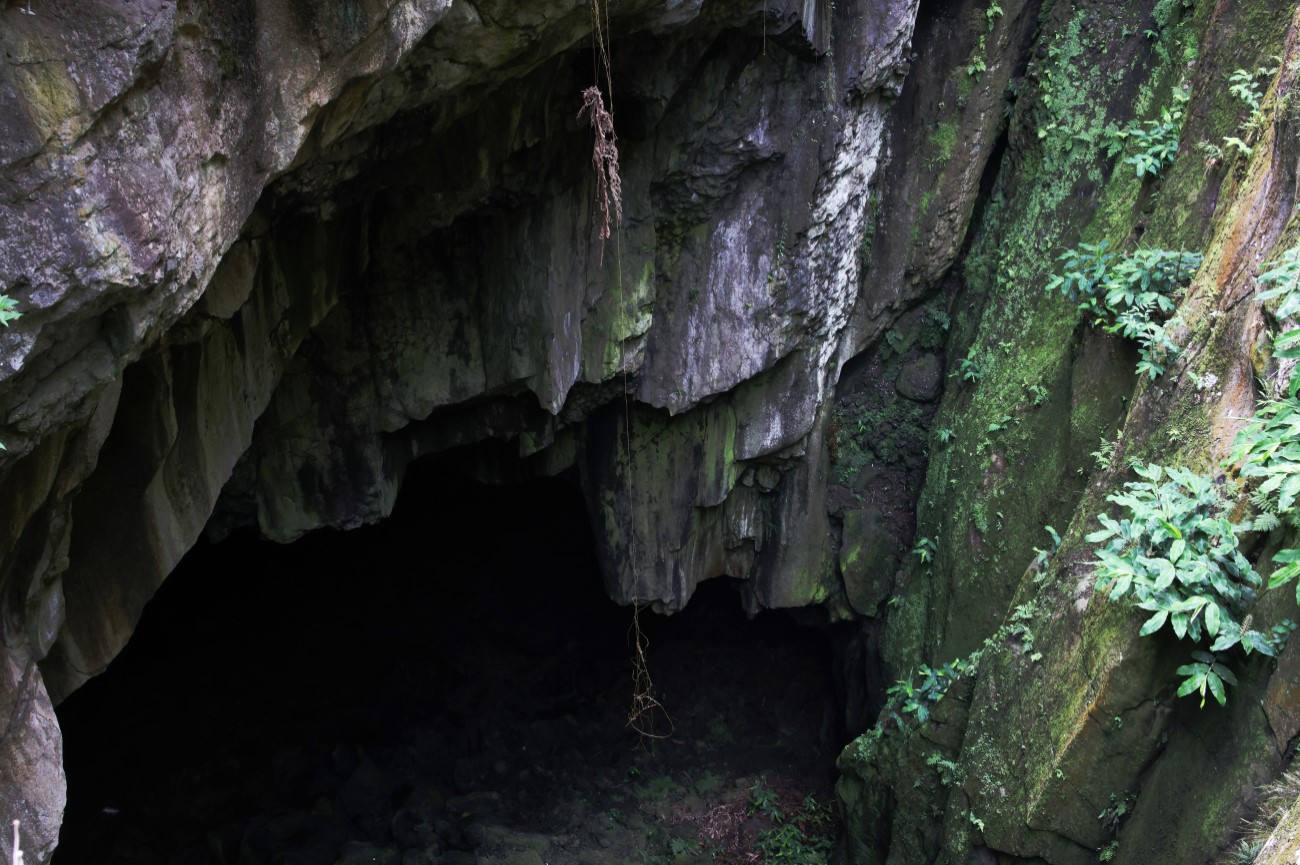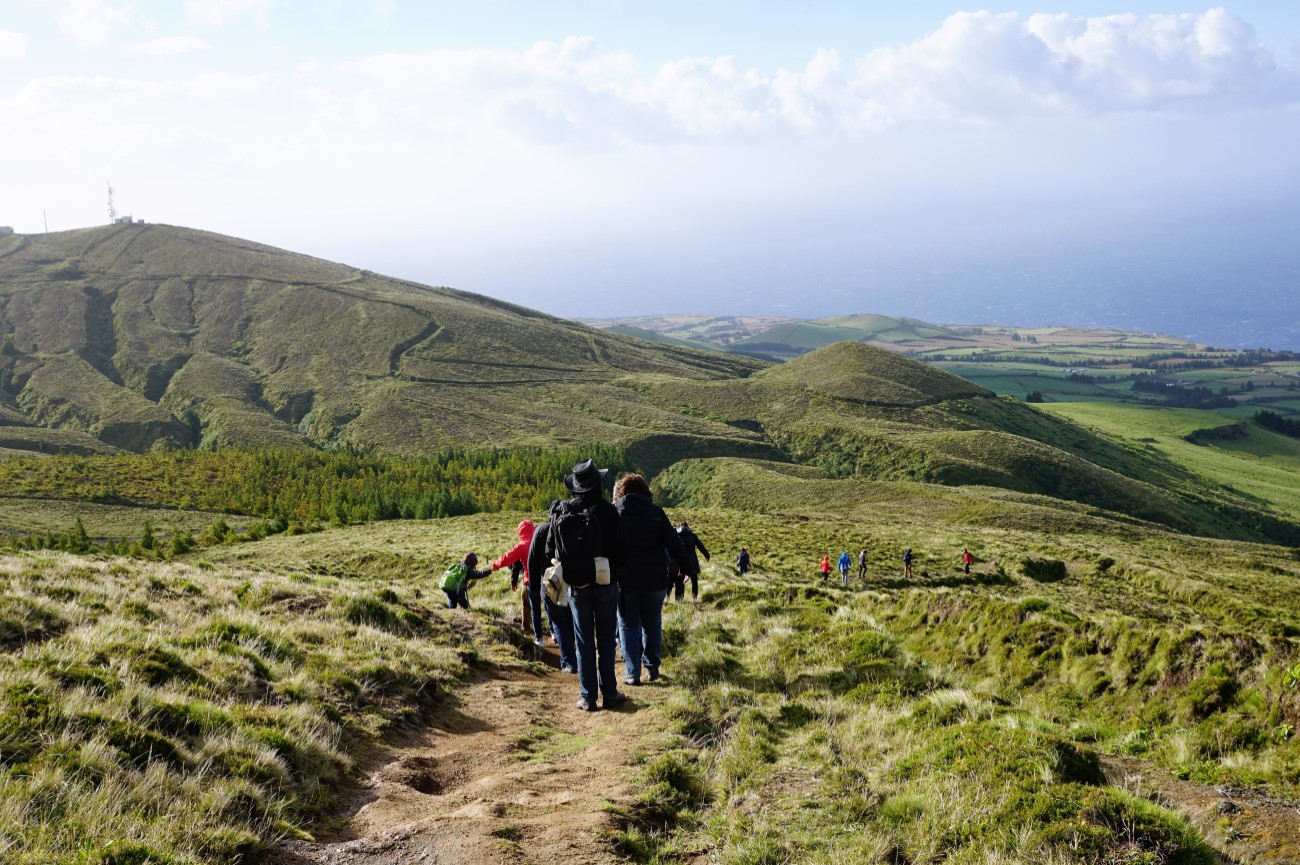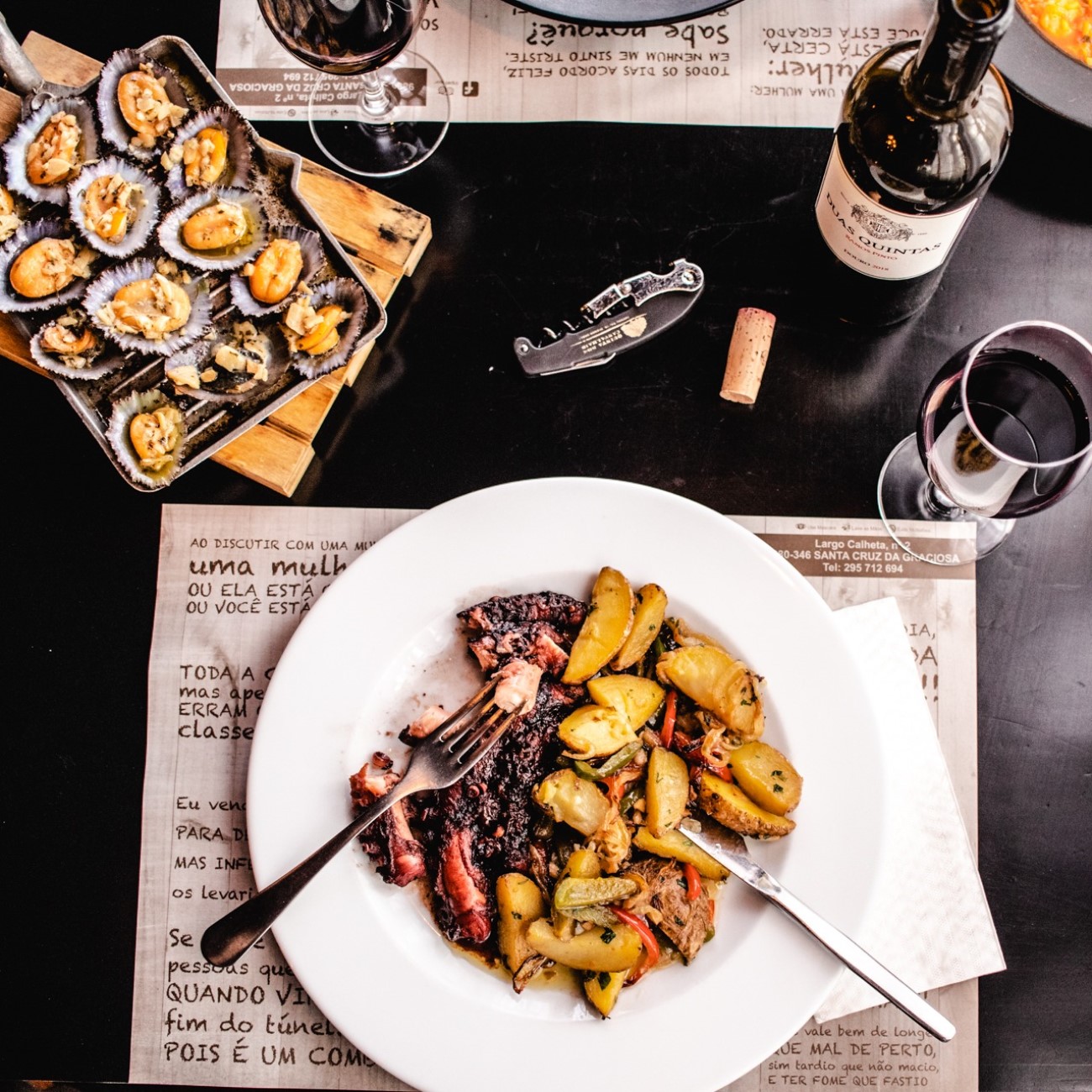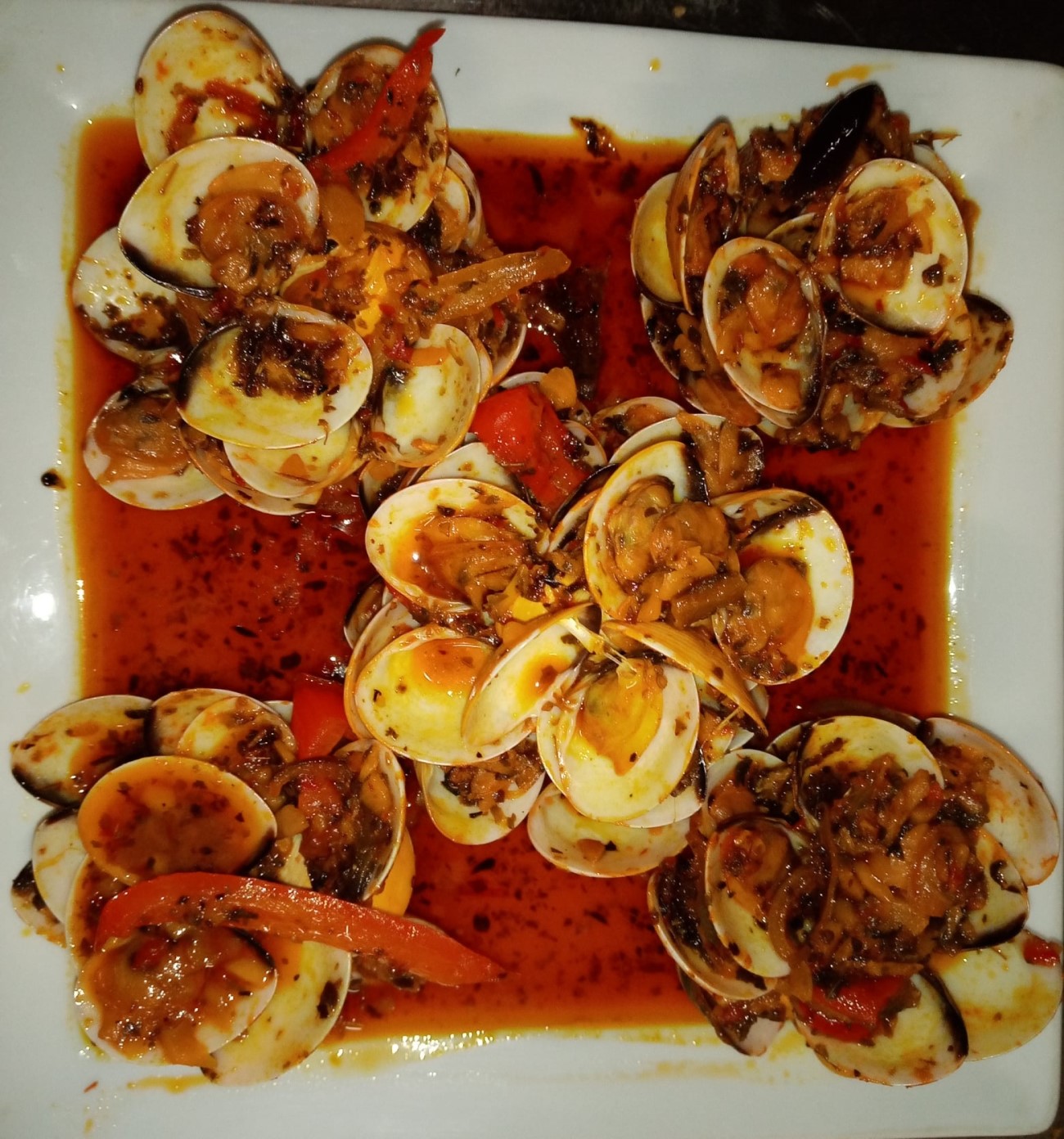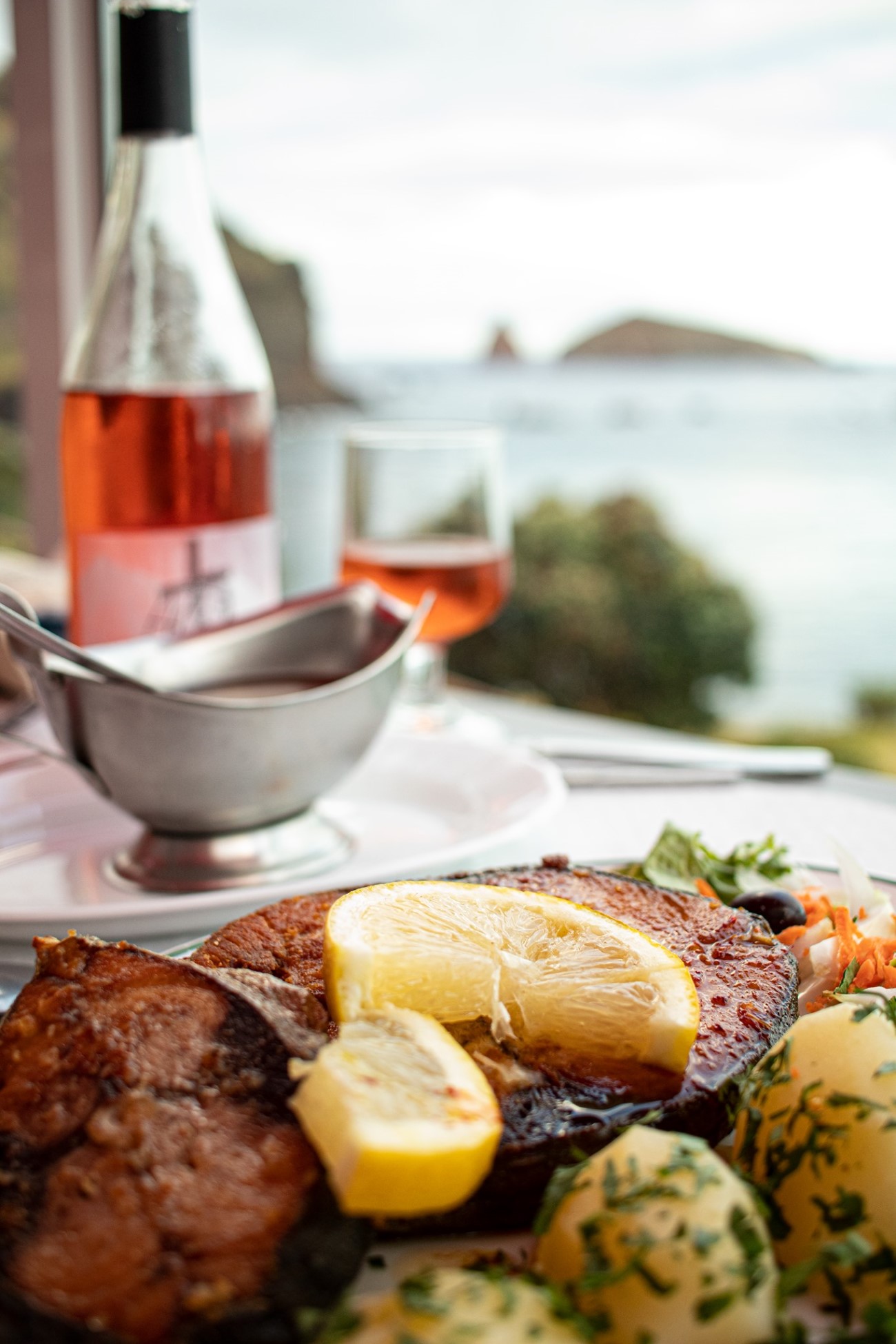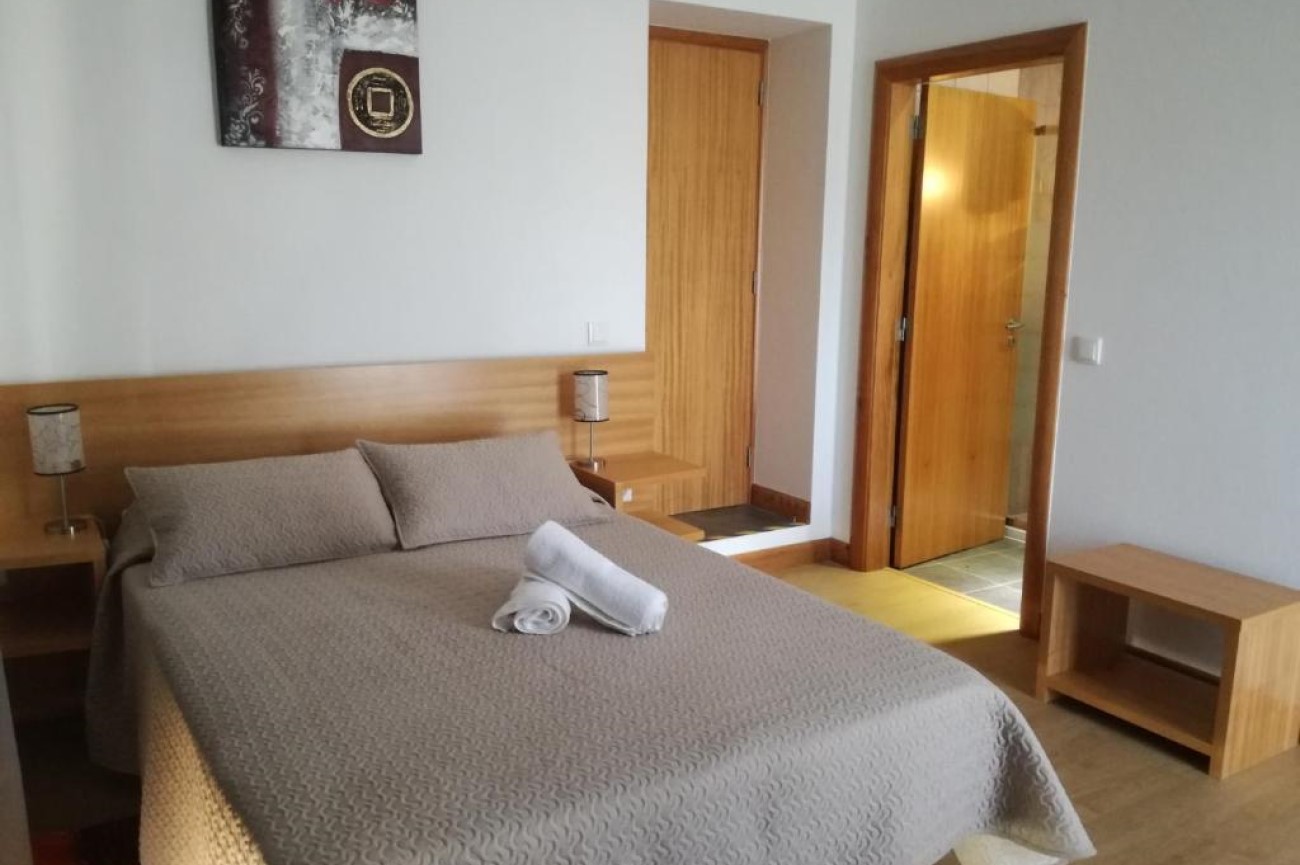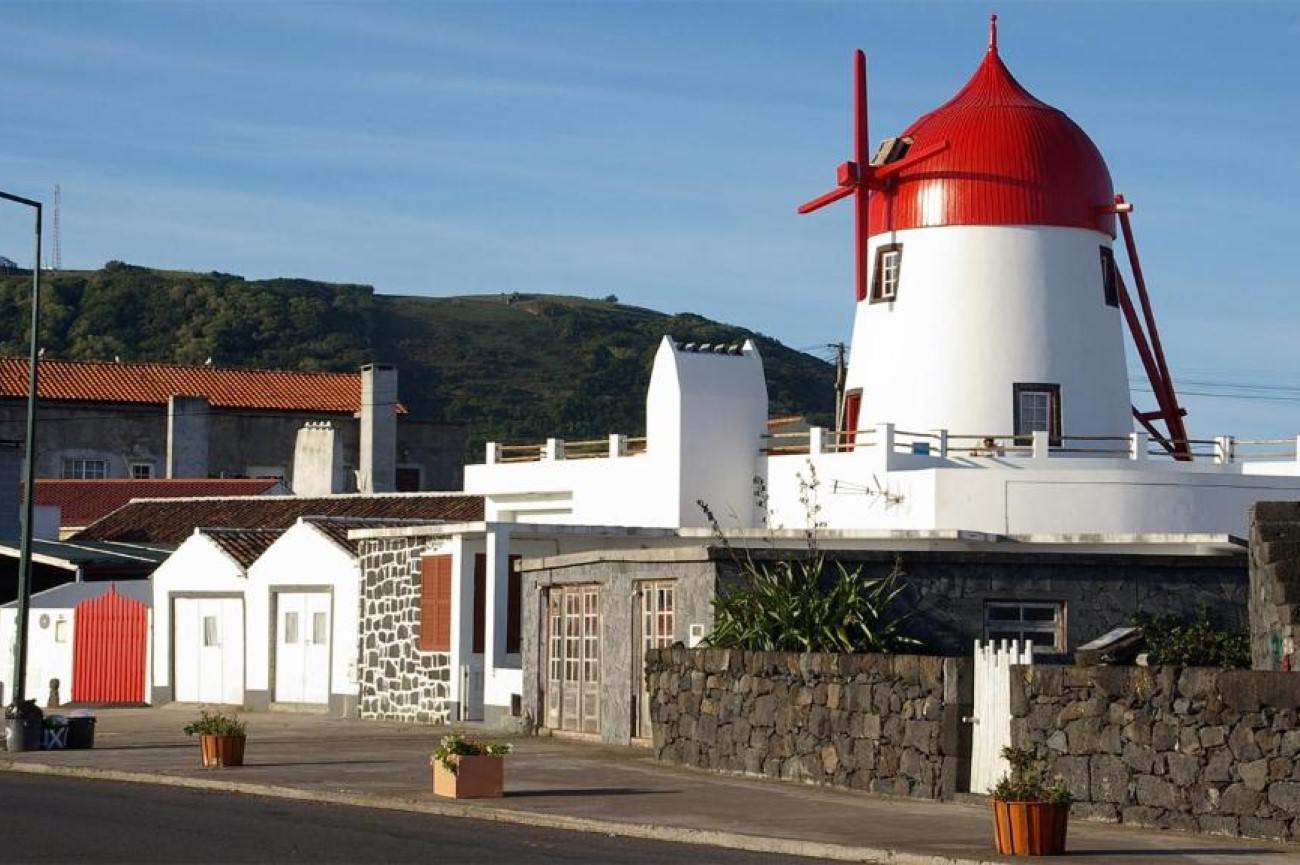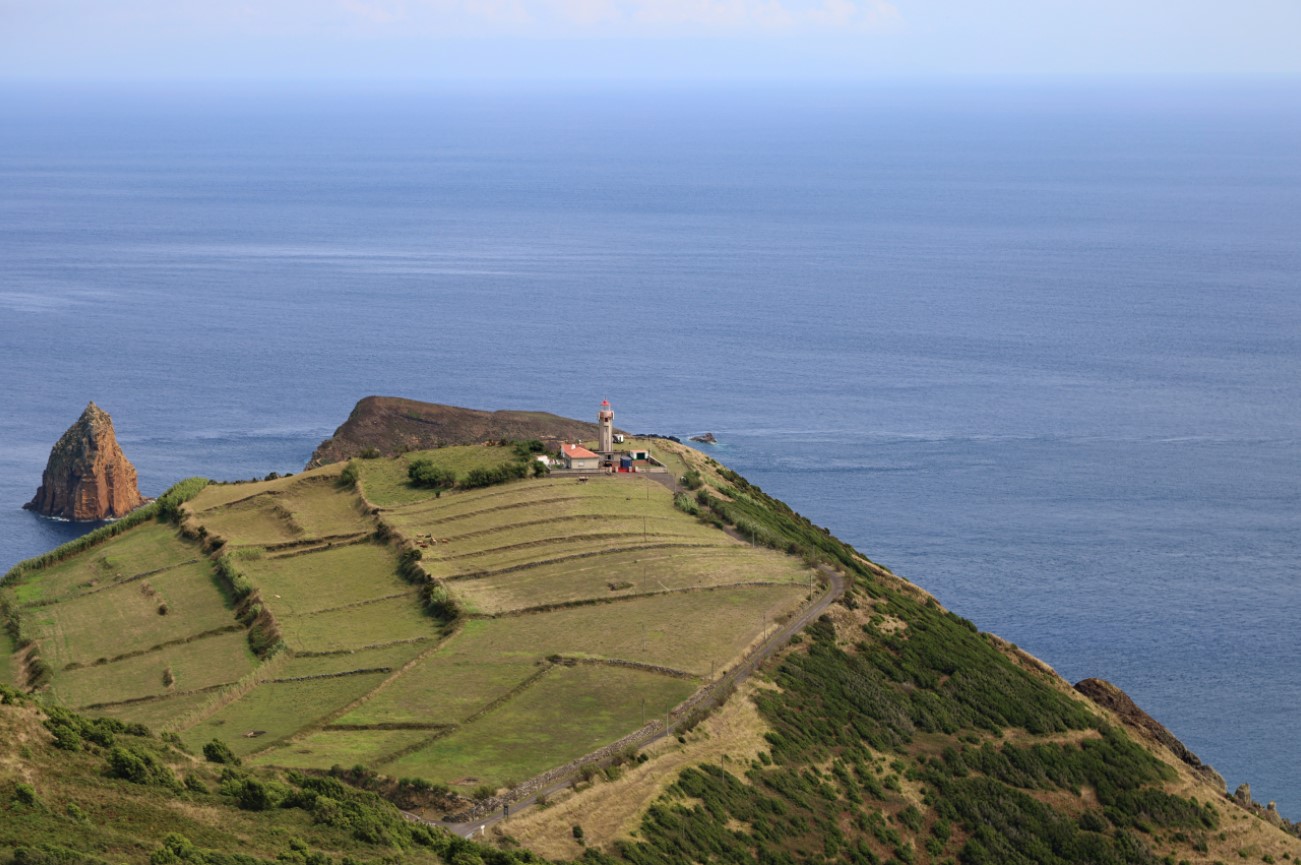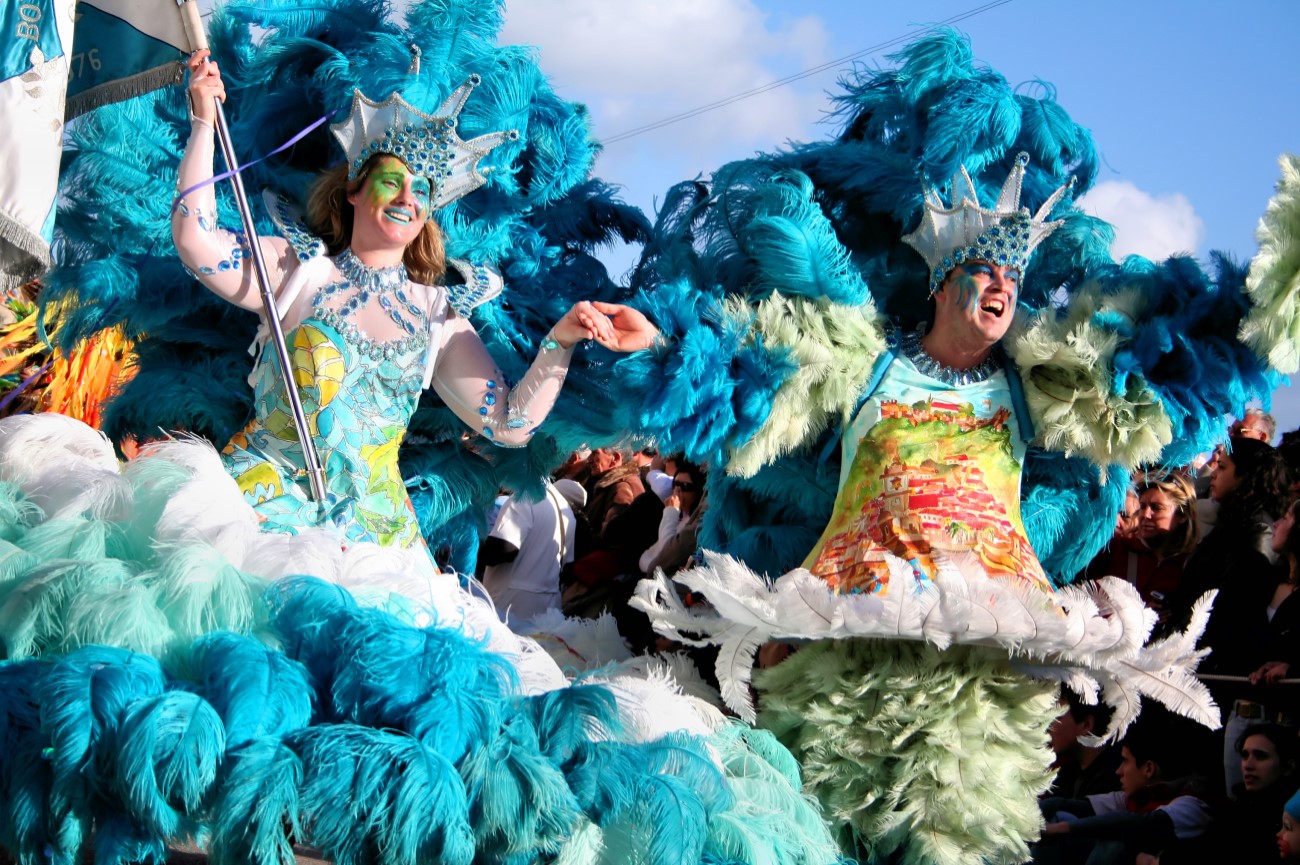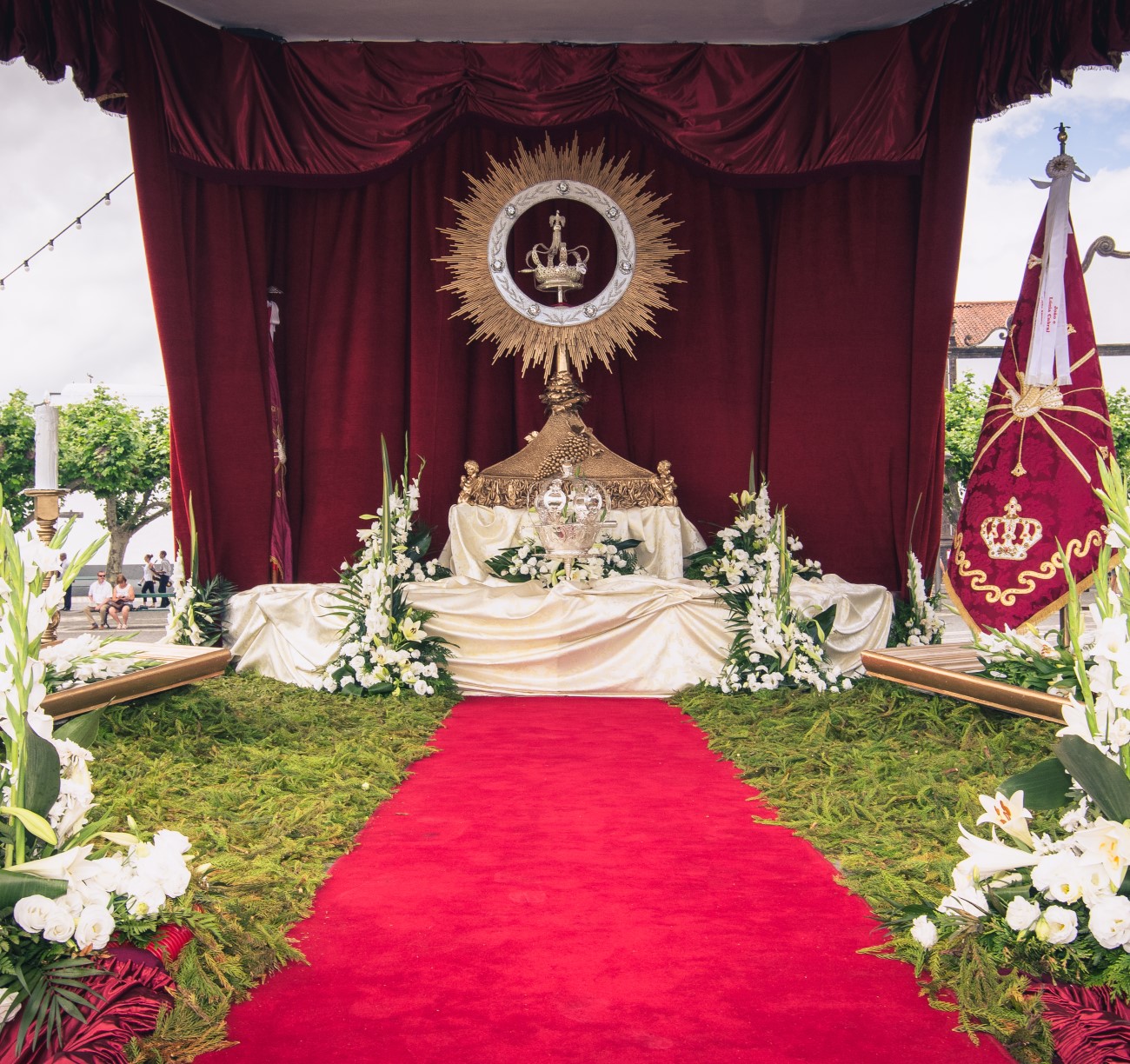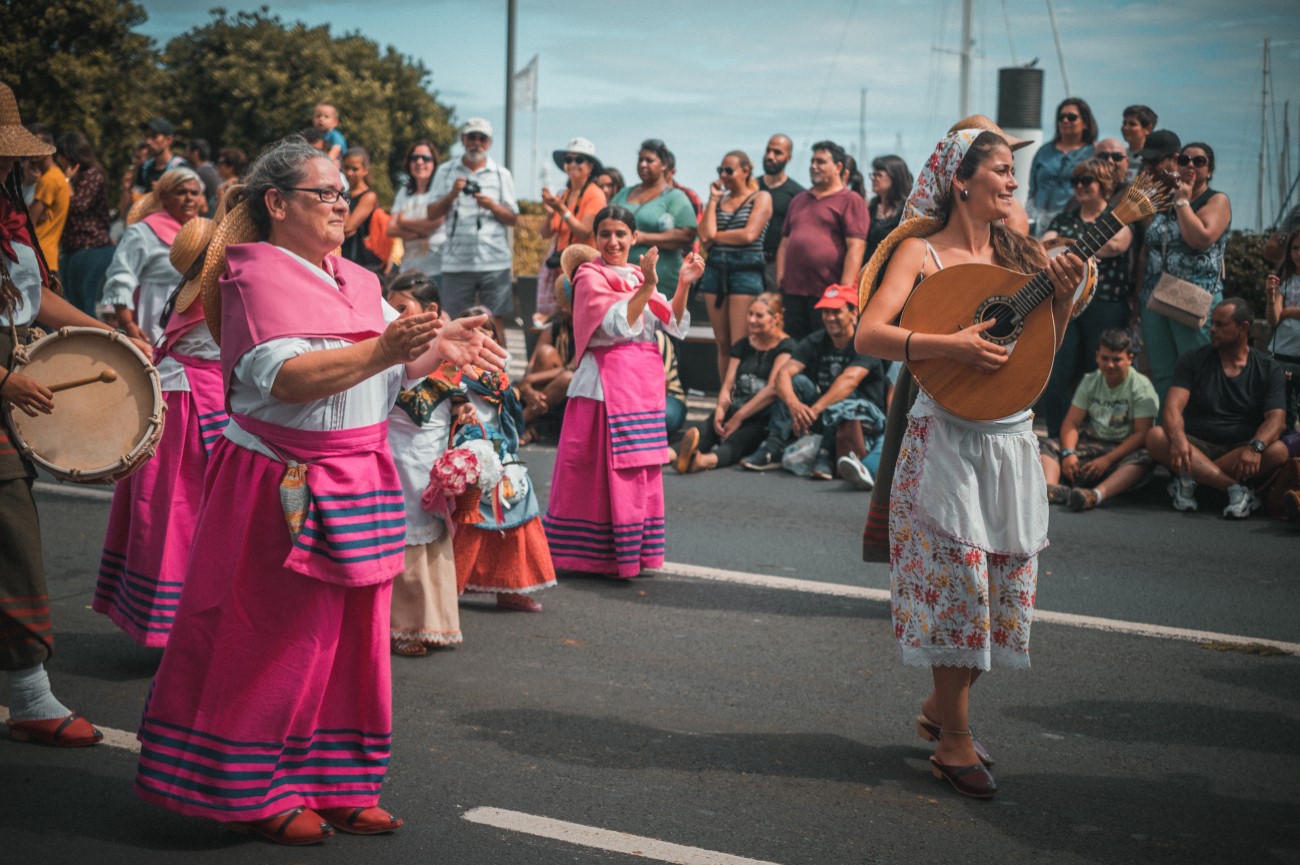Things to do in Graciosa, Azores: 3-day itinerary
Often overlooked by the larger Azorean islands, Graciosa is well worth a visit. This central island hides many fascinating attractions, from dramatic volcanic caves to calming natural pools and a vast countryside dotted with whitewashed houses and bright red windmills.
Its small size means that everything is within easy reach. There’s even a 7km-trail that crosses the island from west to east. Along the way, you may spot the Azorean dwarf donkeys roaming down the road.
If you’re wondering what to do on the island, our three-day itinerary will help you plan your trip. It includes the best things to do in Graciosa, plus tips on where to eat and stay during your holiday.
Day 1 - North

Morning: Santa Cruz da Graciosa
Our first port of call is Santa Cruz, the capital of Graciosa. It’s the perfect base to explore the rest of the island. On the outskirts of the town, you can visit the Ermida da Nossa Senhora da Ajuda, a fortress-like chapel erected in the 15th century. It’s worth coming here for the fantastic views of the coast and Santa Cruz.
Closer to the city centre, you can walk along the sea and explore some of the town’s main attractions. Stop by the Museu da Graciosa to learn more about the island's history. Then head down for a swim at the Piscina Natural do Boqueirão, a natural pool created by the black lava that solidified here ages ago.
Afternoon: Praia do Barro Vermelho
Follow the coastal road about 1.5 miles west of town, and you’ll come across the Praia do Barro Vermelho, a great place to relax in the afternoon. The beach, which gets its name from the red sand that surrounds the rocky bathing area, includes a picnic zone, so make sure to pack some snacks or a lunch to enjoy here.
Farol da Ponta da Barca
Continue along the waterfront until you reach a black and white striped lighthouse. At 71m above sea level, this cliffside lighthouse is the highest in the Azores. Whether you stay on the ground or head up to the tower, you will have magnificent views of the ocean and the nearby Ilhéu da Baleia (Islet of the Whale), so-called because it’s shaped like a whale.
Baía do Porto Afonso
A few miles south of the lighthouse, you will find the old fishing port of Baía do Porto Afonso. This unique port is no longer in use, but you can still spot the caves where fishermen kept their boats. These days the area is mostly used for swimming and deep-sea fishing. Stay here to end your day with a beautiful sunset.
Day 1 - Graciosa Tour Map
Day 2 - South

Morning: São Mateus
We begin the day in São Mateus, a well-preserved traditional village. Taking a walk through its historic centre, you will find several churches and chapels. You can visit the Igreja de São Mateus, a 16th-century church that houses Flemish and Baroque carvings and artwork. Just five minutes away from the church is the Fábrica das Queijadas da Graciosa. This local bakery makes the famous queijada, a star-shaped pastry filled with milk and eggs.
Before you leave São Mateus, make sure to stop by the Praia de São Mateus. It's the only sandy beach on the island, and rather unusually for the Azores, it has light coloured sand. From here, you can catch a boat to explore other nearby Azores islands. Finally, around the outskirts of town, you can spot many restored red windmills.
Afternoon: Baía da Folga
We now head south to the village of Luz. Here, you can take a look at the Church of Nossa Senhora da Luz. Then, walk down a short path toward the coast, stopping at the Baía da Folga. Once you get to the bay, you can relax and have a swim. On clear days, you can also enjoy the view of three other Azorean islands: São Jorge, Pico and Faial.
Serra Branca
For amazing views of the island and the surrounding ocean, go up to Serra Branca. This series of volcanic structures is 375m high, allowing you to see much of the island and the sea on a clear day. This is also the beginning of the trail that crosses the island west to east and ends in São Mateus, where we started this morning.
Caldeirinha
Close to Serra Branca is the Pico da Caldeirinha, also known as Caldeirinha. Above this peak, you will see what remains of a volcanic crater. Take a walk around it and then enjoy the ocean views. Sometimes it’s also possible to spot the islands of Terceira, São Jorge, Pico and Faial from this viewpoint.
Miradouro da Ribeirinha
One last stop to end the day. From this viewpoint, you can watch the sunset and capture the lush green fields framed by the sea in the background.
Day 2 - Graciosa Tour Map
Day 3 - South
Morning: Termas do Carapacho
Our first stop of the day will rejuvenate and prepare you for further exploration. Located right by the sea, this hot spring spa is known for the water’s healing properties. The temperature can range from 35º to 45º and is said to heal rheumatoid and dermatological ailments. Take a dip and feel calmed and relaxed before continuing your day.
Miradouro do Carapacho
A few minutes up the hill from the spa, you can admire the view from the Miradouro do Carapacho. Take a seat here and look out at Ponta do Carapacho and Ilhéu de Baixo.
Afternoon: Furna do Abel
Now it’s time to see the geological and volcanic wonders of Graciosa. Surrounded by luscious green grasses and plants, Furna do Abel is a lava tunnel that you can walk into. Also known as Furna de Laval or Furna do Roque, this stunning volcanic structure is 93 metres long. If you venture to the very end you will find an altar and cross. These are said to have been placed in the cave in the 1970s, but the origins are unclear.
Furna da Maria Encantada
Just down the road from Furna do Abel, you'll spot the Furna da Maria Encantada. Though not as long as the previous one, this is also a lava tube, and once you emerge on the other side, you can see the striking interior of the Caldeira. If you want, you can continue along the path signposted with “Torre” until you reach a tower. Standing at the top, you can take in the view of the island.
Furna do Enxofre
Our last stop on Graciosa is a lava cave named after its smell of sulphur. Begin at the visitor’s centre, where you can learn more about the cave and the island's geology. From here, you’ll need to descend a spiral staircase to reach the depths of the cave. The Furna do Enxofre is visually stunning, with a perfectly dome shaped roof and a cold water lake inside. This cave is an important geological feature of the Azores, and you will be stunned by the luscious vegetation surrounding it.
Day 3 - Graciosa Tour Map
Top things to do with kids in Graciosa
Travelling with kids to the Azores often means spending a lot of time in nature, and Graciosa is no exception. The island is full of geological attractions worth exploring, like the Caldeira da Graciosa or the Furna de Enxofre. You can also spend time by the beach or enjoy a warm bath at the Termas do Carapacho.
Additionally, kids will love visiting the Farol da Ponta da Barca or spotting the red windmills dotted across the island. You can even book a night in one of these if you want.
If you’re looking for something slightly more active, you can follow some of the island’s hiking trails, like the one starting at Baía da Folga.
Where to eat in Graciosa
Graciosa is renowned for its fresh fish, usually served roasted or in caldeiradas (stews). Other regional products include melon and wine. You can also taste a range of traditional sweets, including pastéis de arroz (pastry with almond filling) and the queijada (egg and milk tart). Below are some of the best places to eat in Graciosa:
- Restaurante Costa do Sol: Located in the heart of Santa Cruz da Graciosa, this restaurant serves a mix of traditional dishes and offers an affordable daily menu. It's a popular spot, so it's worth booking a table in advance.
- Snack-bar Jale: This no-frills bar serves some of the most delicious seafood dishes on the island. The garlic bread is also highly recommended.
- Dolphin Snack Bar: Overlooking the sea, this cosy restaurant offers a diverse menu of meat and seafood dishes. They also serve smaller snacks like burgers and sandwiches.
Where to stay in Graciosa
- INATEL Graciosa (4 stars): Located in Santa Cruz da Graciosa, this hotel features beautiful views of the sea and surrounding fields. Alongside an outdoor swimming pool, and a magnificent garden, INATEL also offers a health centre and Turkish bath. For bigger groups, there are six villas available for rent.
- Casa Lagar de Pedra (3 stars): This country house is situated on the south end of the island near Caldeirinha. Some rooms have their own terrace or patio, and there is also a shared kitchen and sun terrace. Horse riding, windsurfing, and other activities are also available.
- Moinho Mó da Praia: This unique accommodation occupies the body of a mill in São Mateus. It can take up to six people across a bedroom and two living rooms. The unit also comes with a kitchenette and a terrace with a barbecue.
Best time to visit Graciosa
Because of its relatively flat terrain, Graciosa has a milder climate than other Azorean islands. Although the island doesn’t get as much rain as the rest, the best time to visit remains June to September. During the summer, the likelihood of rain is lower, and the temperature is quite pleasant. Alternatively, you can also plan to visit during a local festival, many of which are held in the summer.
Graciosa festivals
- Carnival: Usually taking place in late February or early March, the Carnival celebrations feature a lot of costumes and dancing. Among the many traditions is the “baile de chocolate”. Whether in sports clubs, townhouses, or fire departments, if the men ask women to dance, they must then offer them chocolate.
- Festas Espírito Santo: Meaning the Holy Spirit Festivities, these festivals take place on Sundays from May to September. There is usually a procession and sometimes a banquet with wine and food. Often the chapel is also decorated by the locals.
- Festas do Senhor do Santo Cristo dos Milagres: Held every year in the second week of August in Santa Cruz da Graciosa, this festival attracts people from all over the island. Even Azoreans living abroad join in. The town is decorated for the festival, and there are many musical shows with folklore groups and philharmonics bands performing live.


